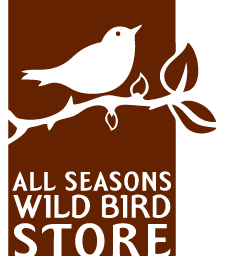ANN’S WINDOW TO NATURE
For all of us outdoors-people who love to feed the birds, hunt, fish, hike and more, I thought it would be interesting to review how natural resource funding and conservation created the natural spaces we enjoy today.
Like many, I absolutely love watching programs related to Yellowstone National Park whether on PBS or even the new television series “Yellowstone.” There is a certain romance tied to the natural beauty of the land. Foothills, mountains, streams, forests, and grasslands come alive on the screen.
But did you know there would be no Yellowstone on Peacock or PBS if not for the Yellowstone National Park Protection Act signed into law in 1872, by President Ulysses S. Grant making it the world’s first national park?
The history of conservation and natural resource use in the U.S. is rich in tradition and leadership. Names such as Leopold, Muir, Roosevelt, Carson, Pinchot, Audubon, Marsh, Thoreau, and Stoneman Douglas are responsible for the creation of the agencies and organizations tasked to oversee our rich natural resources:
- U.S. Fish and Wildlife Service
- National Park Service
- U.S. Forest Service
- Bureau of Land Management
- U.S. Bureau of Indian Affairs

President Ulysses S. Grant signed the National Park Protection Act into law in 1872, making Yellowstone the first national park.

President Theodore Roosevelt and John Muir—”The Father of Our National Park System.” John Muir also co-founded the Sierra Club.
Significant dates and laws written to protect and conserve natural resources in the U.S.:
- 1844 The New York State Game Protection Society established.
- 1849 U.S. Department of Interior established.
- 1881 The U.S. Division of Forestry created.
- 1885 Audubon Society founded.
- 1892 John Muir founded the Sierra Club.
- 1893 Grand Canyon National Park established.
- 1916 National Parks Act created the National Park System.
- 1924 Aldo Leopold, considered “The Father of Wildlife Management,” worked to establish the first wilderness area in Arizona.
- 1934 Duck Stamp Act passed, requires hunters to purchase a one-dollar stamp to fund wetland and waterfowl restoration.
- 1935 Aldo Leopold and Bob Marshall founded the Wilderness Society.
- 1937 Aldo Leopold wrote A Sand County Almanac.
- Marjory Stoneman Douglas wrote The Everglades: River of Grass.
- 1962 Rachel Carson wrote Silent Spring.
- 1970 Earth Day founded.
- 1973 Endangered Species Act.
- 1978 The Boundary Waters Canoe Area Wilderness established.
Laws, agencies, and organizations sprung up out of need associated with exploitation.
What most people don’t often realize is that much of our natural resource management and wildlife management is tied to hunters of old. Hunters and anglers like Theodore Roosevelt and Aldo Leopold often have great insight into wildlife populations and overall health. They worked tirelessly to establish hunting and fishing seasons, bag limits and related sportsmanship-type ethics. In fact, most natural resource funding comes from the sale of hunting and fishing licenses even today.
While conflict among stakeholders who are vested in natural resource use allocation i.e. grazing rights, timber harvest, mining and water use will never go away, perhaps a modern day Theodore Roosevelt or Aldo Leopold will emerge to help us navigate the next chapter of natural resource conservation. Common ground is always possible.
By Eagan Store Manager ANN MCCARTHY

The author, Ann McCarthy, is a hunter, birder, gardener, mother, teacher, puppy foster and Eagan store manager.

